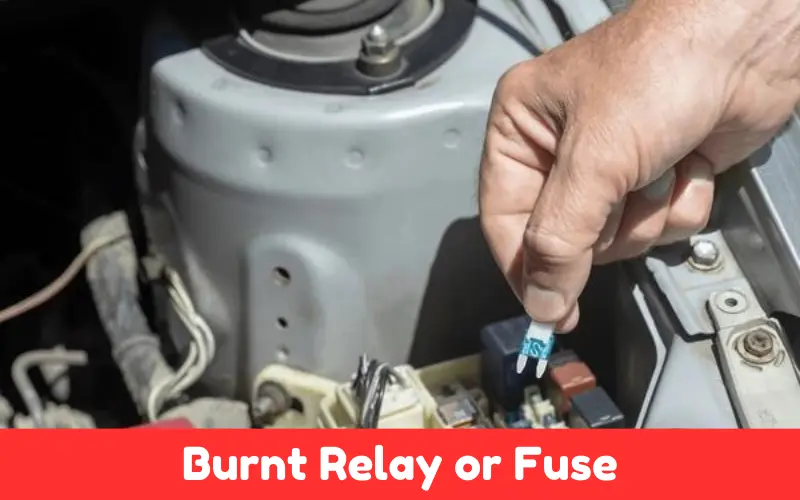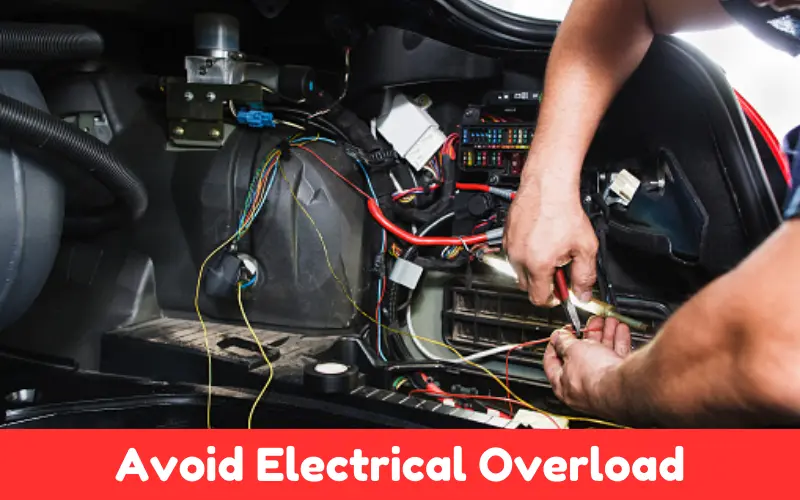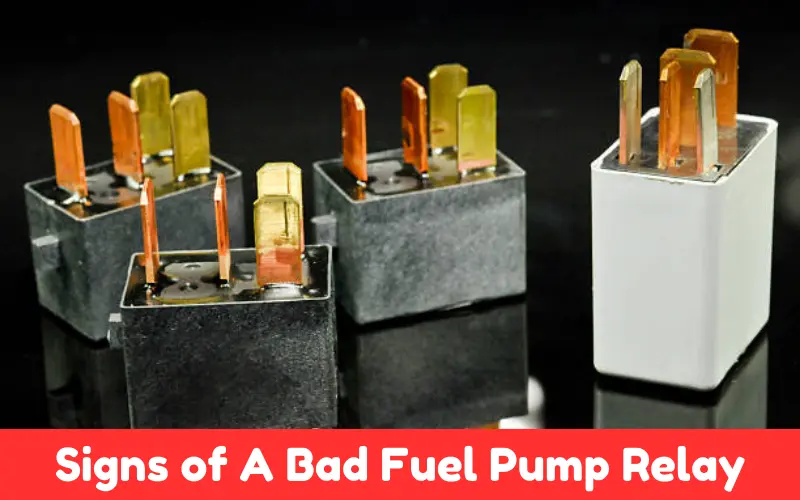The fuel pump relay is an important part of your car’s fuel system because it switches power to the fuel pump when the engine is running and cuts power to it when it isn’t.
Among other issues, a bad fuel pump relay will prevent you from starting the engine and may cause it to stall intermittently, as well as reduce performance.
Learning to recognize when the fuel pump relay is bad will help you prevent breakdowns and keep your car running smoothly.
In this article, we will see the common signs of a bad fuel pump relay, and answers to frequently asked questions on this part are explained further in this guide.
Article Summary
Signs of A Bad Fuel Pump Relay
The fuel pump relay is an electrical switch that energises the fuel pump and sends power to your fuel system. The fuel pump relay does just the exact job of that’s its name.
When it is about to go bad, there are several symptoms that system hiccups will show that might worry a driver.
If you want to know whether your fuel pump relay has gone bad, observe the following signs:
1. Difficulty Starting the Engine
For example, if your car is having trouble starting, especially after it’s sat for a bit, and you think it might be a bad fuel pump relay, you can test it to confirm.
The fuel pump relay is what powers the fuel pump, and if it’s bad, the fuel pump won’t actually get power to suck fuel through the lines to start the car.
2. Intermittent Stalling
The relay connects the fuel pump to the electrical system, and a faulty relay can cause the engine to cut out without warning while driving.
The fuel pump supplies the engine with gas, and the relay ensures a stable source of power for it so that it can provide the appropriate amount of gas when needed.
3. Loss of Power
You might also be told you have a bad fuel pump relay if you notice a sudden loss of power while driving, especially when you are accelerating.
Without a working fuel pump relay, your fuel pump may not get a steady flow of power to function, and that could lead to lowered fuel pressure.
4. Engine Sputtering
If the fuel pump relay stops working, your engine sputters or runs rough, especially at speed or under load.

Fluctuating power to the fuel pump leads to fluctuating fuel pressure, which creates misfires and sputtering.
5. No Fuel Pump Noise
If you turn the ignition key to the ‘on’ position, and you don’t hear the fuel pump buzzing or humming, and your engine won’t start, chances are the problem lies somewhere with the fuel pump relay.
6. Fuel Gauge Issues
You may also get erroneous readings from your fuel tank gauges when the fuel pump relay is bad. If you’ve noticed the fuel gauge starting and stopping or displaying an empty tank when there is fuel, this is a similar issue.
7. Check Engine Light
Sometimes, the fuel pump relay goes bad, triggering the Check Engine Light on your dash computer. Modern vehicles use onboard diagnostics, including sensors, to determine when there’s a problem with the fuel system, possibly the fuel pump relay.
8. Burnt Relay or Fuse
A burnt or damaged fuel pump relay is noticed visually, and it needs to be replaced. The relay’s burning suggests possibly defective power or excessive current flow, leading to failure.

Can A Bad Fuel Pump Relay Cause Poor Acceleration?
Yes, a faulty fuel pump relay is a potential cause of poor acceleration. The fuel pump relay regulates the current going to the fuel pump itself, which then regulates the fuel pressure being sent to the engine.
If the fuel pump relay starts to fail, then the power coming from the relay to the fuel pump itself might fluctuate.
This fluctuation would result in insufficient fuel pressure being supplied to the engine, which in turn causes the engine to not receive the fuel needed to accelerate at optimum levels.
In case it is not able to draw enough amperage for a proper amount of fuel, it will experience symptoms such as slow acceleration, a feeling that it’s chugging or stumbling when the operation of the throttle pedal is taking place, as well as a general lack of performance.
Any of these symptoms can be a sign that the fuel pump relay needs to be sorted out. Suppose you are observing a lack of proper acceleration or other issues.
In that case, it is an opportunity to have the relay inspected by way of a proper mechanic who can replace it.
What To Do If You Suspect A Bad Fuel Pump Relay
Hence, if you experience any of such symptoms, take your vehicle to a mechanic to get it checked. They should be able to properly diagnose your problem, and then you will know whether your fuel pump relay needs changing before you are stranded.
To avoid problems with the fuel pump relay and to work well, there are three precautions:
Regular Maintenance Checks: Have your car’s electrical and fuel systems inspected routinely. A professional mechanic is better equipped to check elements like the wiring of the fuel pump relay and ensure that the parts are functioning.
Avoid Electrical Overload: If the electrical system is overloaded, you could be putting extra strain on the fuel pump relay. Don’t add aftermarket electrical accessories that would increase electrical load.

Keep the Fuel System Clean: Use premium fuel and a fuel system cleaning product on a regular basis.
A clogged or contaminated fuel system makes the fuel pump and its relay work too hard, potentially causing the pump to prematurely burn up.
These preventative measures will help prolong the useful life of the fuel pump relay and prevent damage to the fuel pump driving motor.
FAQs on Signs of A Bad Fuel Pump Relay
What is A Fuel Pump Relay?
An electrical component, this relay controls the flow of power from the battery to the fuel pump under certain specified conditions, such as when the engine is started. This is necessary for the pump to work, but only when the engine is running. The purpose of the relay is to ensure that the fuel pump doesn’t overwork and to maintain engine power. Without it, the fuel pump may not operate at an adequate level, and the engine could stall or lack power.
How Can I Tell If My Fuel Pump Relay is Bad?
Bad fuel pump relay symptoms are a lack of engine cranking power, intermittent stalling, engine sputtering, and no fuel pump ticking or whining noise when your key is in the on (or accessory) position. Also, look for a strange fuel gauge reading and check for an illuminated Check Engine Light on the dash. If any of these are the case, then you likely have an issue with your fuel pump relay.
Can I Drive with A Failing Fuel Pump Relay?
So Don’t drive with a bad operating Fuel Pump Relay. It will lead to engine stalling and loss of power and leave you in the hands of disabled safety on the road. Many of the symptoms of a bad relay are system failures, so action should be taken to fix the component.
How Do I Replace A Faulty Fuel Pump Relay?
In some cases, wire connecting can be done at an accessible terminal connector at a fuse box or under the hood. An easy way to change the fuel pump relay is by pushing it and releasing it through up and down movements. It could be achieved if you locate the relay in your fuse box or relay panel, pop it out, unplug it and insert a new one to install. To avoid any resistance, be sure to use the right type of fuel pump relay. If you’re not a mechanic or may have a thing for it, try not to change your fuel pump relay by mistake. It’s always better to learn techniques, but don’t attempt doing things for the first time when it comes to technical issues; instead, seek help from a professional who will handle the problem since it can be very dangerous and high risk if it’s not performed correctly.
How Much Does It Cost To Replace A Fuel Pump Relay?
The cost to replace a fuel pump relay varies and depends on your year, make, or model, as well as labor rates at your local repair garage. I will say the part is not too expensive, but labor is what comes into play. Call around and shop for the price before getting the job done.
Conclusion
A bad fuel pump relay can cause trouble starting the vehicle, intermittent stalling, a loss of power, and many of those annoying small issues that one finds themselves with every morning on the way to work.
Early detection and prompt attention to these signs can help you keep your car’s performance at peak levels and save you from potentially serious problems further down the road.

